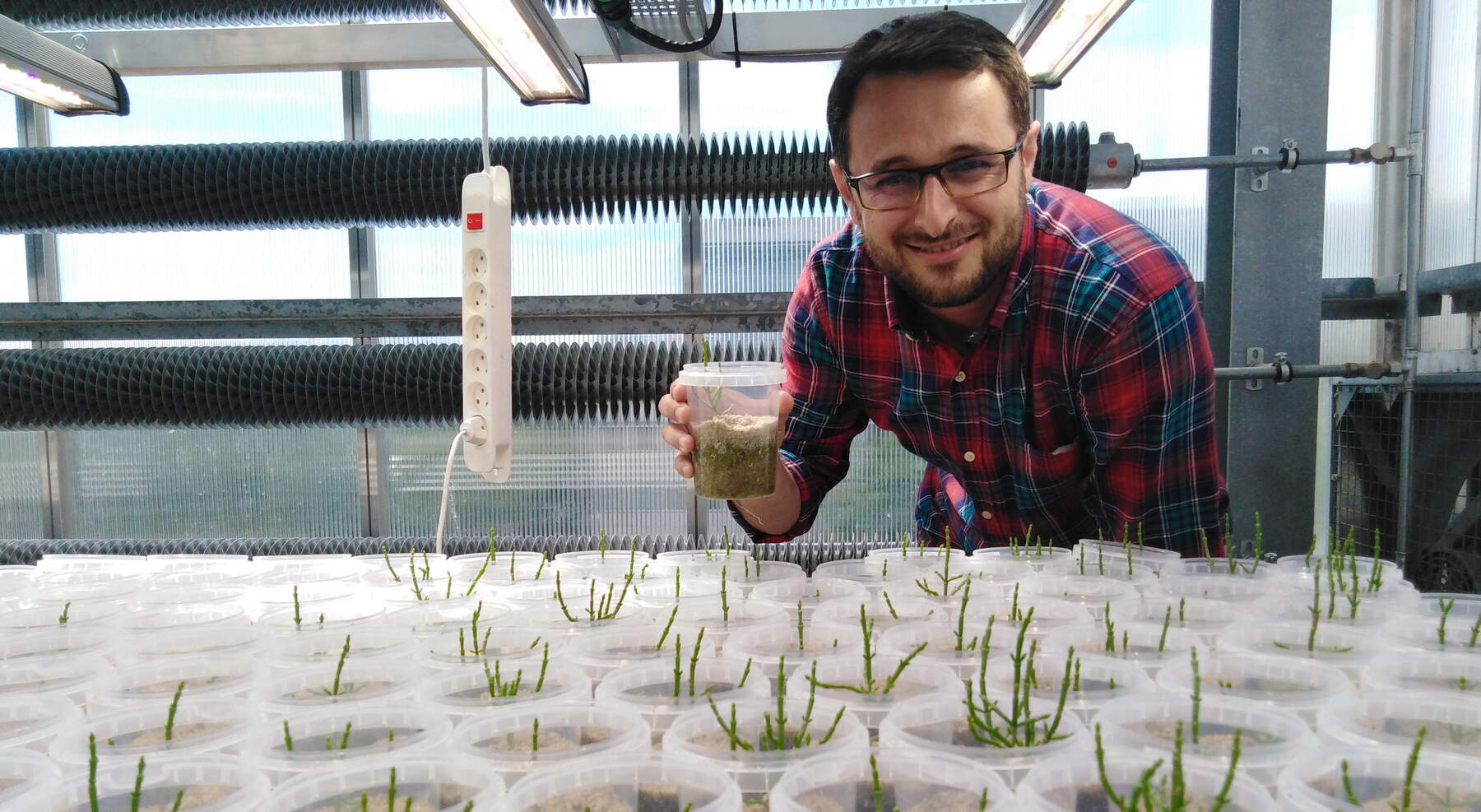Raheb brought with him two species of halophytes from Iran which he had prepared as tissue cultures prior to his research visit to UCPH. One of these are endemic to Iran and the Caspian Sea and it was exciting to see how the cultures developed into proper plants in no time up in our glass house facility.
Raheb Mahforouzi visited our group for six months in 2019. Raheb is enrolled as PhD student at Sari Agricultural Sciences and Natural Resources University in Iran and I am serving in his committee as co-supervisor.
Raheb is working on mitigation of salinized land using halophytes to extract the toxic salts before the water is used for irrigation purposes. During his visit to my group, Raheb assessed the waterlogging tolerance of two of his target species and the ability of these species to tolerate and accumulate salt in the shoot tissues.
Raheb is now back in Sari working on the data and I hope we will be able to produce a nice scientific publication based on his work in Copenhagen. If not, then at least Raheb had a great experience in our group that the data he obtained will still be useful for his PhD and the practical application of these species as "biological engineers" in salt mitigation.
Raheb is working on mitigation of salinized land using halophytes to extract the toxic salts before the water is used for irrigation purposes. During his visit to my group, Raheb assessed the waterlogging tolerance of two of his target species and the ability of these species to tolerate and accumulate salt in the shoot tissues.
Raheb is now back in Sari working on the data and I hope we will be able to produce a nice scientific publication based on his work in Copenhagen. If not, then at least Raheb had a great experience in our group that the data he obtained will still be useful for his PhD and the practical application of these species as "biological engineers" in salt mitigation.

